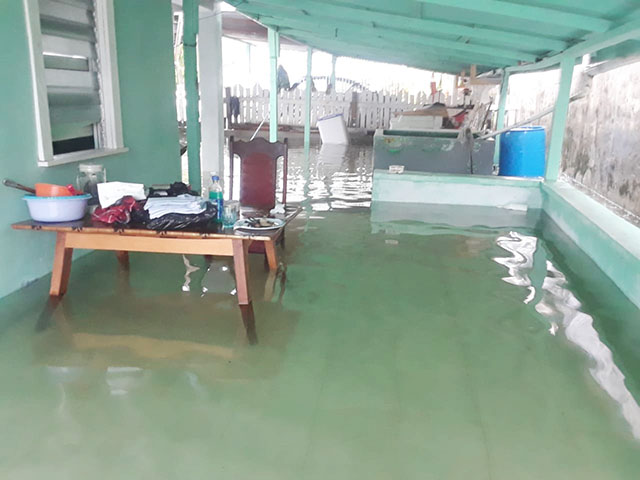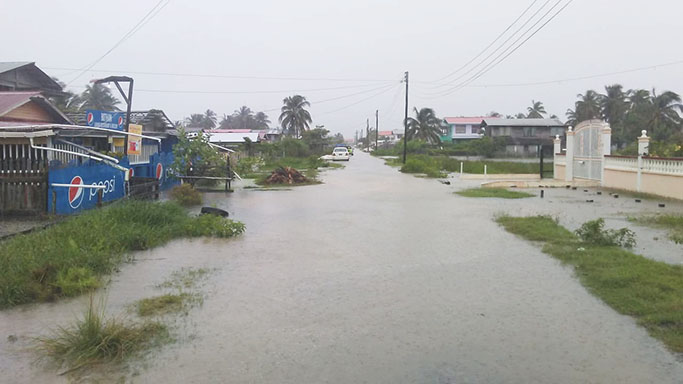Several villages on the Essequibo Coast remain flooded as a result of intense rainfall over the previous two days and a temporary pump is being installed at Devonshire Castle to aid in the draining of water from the flooded lands.
Regional Chairman Devanand Ramdatt yesterday told Stabroek News that as the rain continues, residential, commercial and farmlands are waterlogged. Nonetheless, he said, the water pumps and sluices are working to bring relief to the region.
Ramdatt, however, opined that if the temporary pump at Devonshire Castle was put in place prior to the commencement of the rainy season, the effects of the flooding could have been reduced tremendously. He noted that with the construction of an irrigation pump at Devonshire Castle, a few major drains are blocked, preventing water from being able to discharge into the river.

“I made a recommendation about four months ago to the NDIA (National Drainage and Irrigation Authority) board but they failed to act. I told them that we need a temporary pump at Devonshire Castle but they failed to install it. The pump needed to be installed by the last week in November because they know December/January is the rainy period. We need an alternative system in place given that the drains are blocked to allow the construction of the pump station,” Ramdatt posited.

He also told Stabroek News that the compound of the Essequibo power plant is inundated and should the water level rise, it would have been a threat to the power plant.
Meanwhile, President of the Essequibo Chamber of Commerce Roopan Ramotar told Stabroek News that floodwaters were slowly receding off the lands. He explained that due to the backlands being higher than the front lands, water has been flowing down. He observed that there has been excessive rainfall in the region and should the rains continue, water levels would rise.
Ramotar called on government to implement measures that will allow farmers to create climate change resilient farms to prevent their crops from perishing as a result of floods.
“Our ministers and government [are] not proactive, they are reactive. They react when things happen. And this is an example. Only after we were flooded they sent fuel to pumps. That is not enough. We need to be prepared because with climate change we don’t know what will happen and we have to be ready,” Ramotar said.
Heavy and continuous rainfall between Wednesday and Thursday left several communities and farmlands in both Regions Two and Three inundated and in some areas on the Essequibo Coast, the situation was exacerbated due to the regional administration failing to deliver fuel to drainage stations.
The Civil Defence Commission (CDC) has been on high alert and is monitoring the situation.
According to a report issued by the National Weather Watch Centre at Timehri, between 8 am on Wednesday and 8 am on Thursday, some areas in regions One and Two had experienced more than an inch of accumulated rainfall.
On Thursday, some areas experienced approximately nine inches of rainfall.






